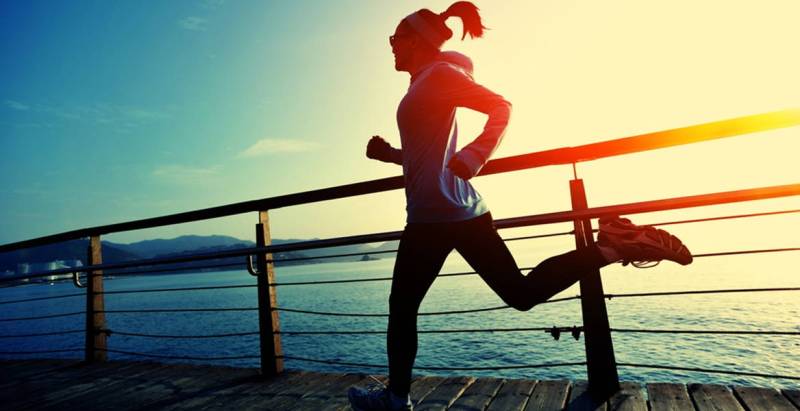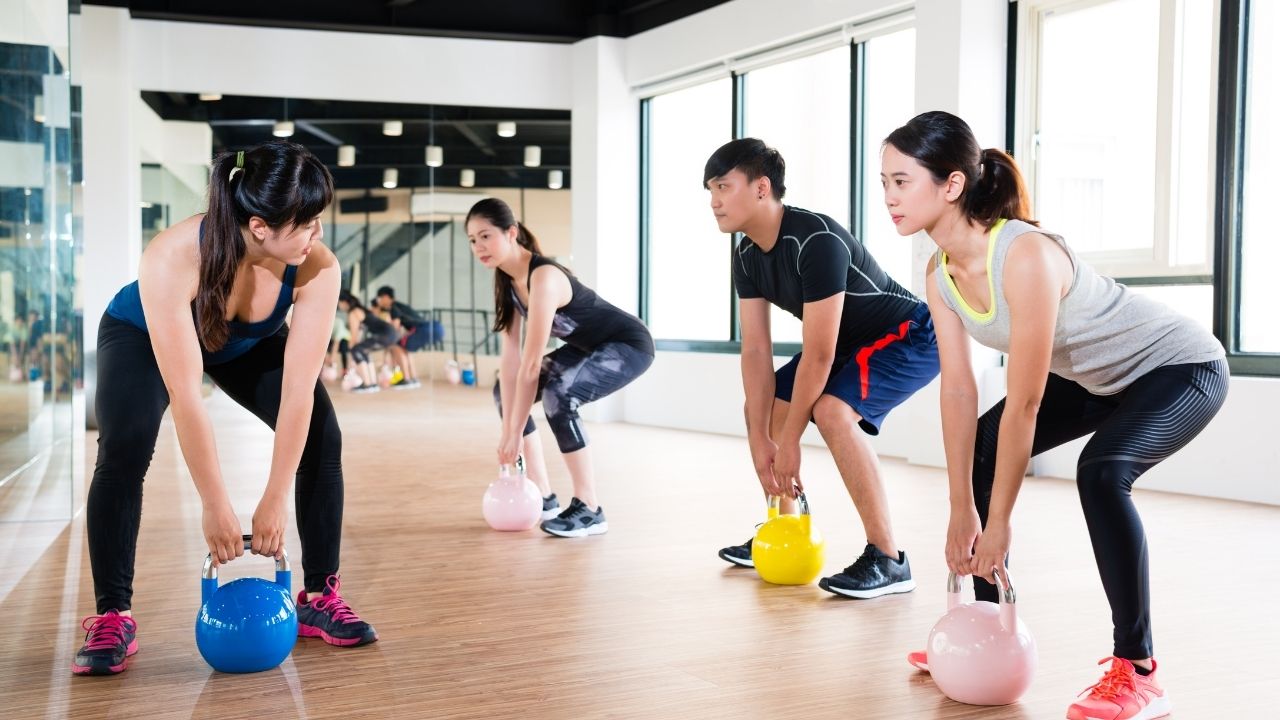
How can you exercise if you don't have access? Working remotely or from a hotel can make it difficult for you to find a gym where you can exercise. You might also struggle to adjust to a different environment and create new routines. You may miss the social interaction and camaraderie of working out with a group or swim laps with a group. Perhaps you even miss the motivational support from a personal trainer. There are many ways you can stay fit without going to the gym. You can even do it in the comfort of your own home.
It doesn't matter if you don’t have the time or money to join a gym. You can still get a great work out. These exercises can be performed in many ways. You can start with basic equipment and get creative with your training. You can do bodyweight exercises and make your housework an exercise session. Fitness experts say you don't have to spend a lot of money to get in shape at home, and it doesn't take a lot of equipment.

The internet is another way to exercise, even if you don't have a gym membership. It is easy to find free videos online that can help you get a good workout. It's easier to stick with a routine if you have someone to support you. However, if you don't have a gym, you can still exercise and keep yourself healthy and fit. Or, you could buy basic fitness equipment and start to be creative.
You can also create your personal fitness routine at home. First, dedicate an area of your home to exercising. It is possible to use an exercise bike, treadmill, or elliptical to help you work out. You can tailor a home fitness routine to meet your goals. You can set up a room in your home and follow the directions on the video if you don't have access to a gym.
It can be hard to find the time to attend a gym regularly. Additionally, driving to and from the gym can be stressful. You can exercise at your own pace, avoid stress and get a workout whenever you like. You can even take an online yoga class. It's never too late to start exercising. Even if your gym is not available, you can still benefit from a routine of yoga or Pilates.

You can also exercise at home without going to the gym. You don't need to be a member of a gym. You can also do exercises at home that require minimal equipment. You can do a seven-move home workout with minimal equipment. This workout involves leg raises and push-ups as well as mountain climbers and push-ups. These exercises can help you lose fat and build muscle at your home.
FAQ
What's the problem with BMI?
BMI stands to Body Mass Index. It is a measurement of body weight based on height. This formula calculates BMI.
Weight in kilograms divided by height in meters squared.
The result can be expressed as a number between zero and 25. A score of 18.5 or higher indicates overweight, while a score of 23 or higher indicates obesity.
A person who weighs 100 kilograms and is 1.75m tall will have an BMI of 22.
How can you tell what is good?
You must listen to your body. Your body is the best judge of how much exercise, food and rest you should get. To avoid overdoing it, it's important that you pay attention to what your body is telling you. Be aware of your body and do what you can to maintain good health.
How often should I exercise
A healthy lifestyle requires regular exercise. You don't have to exercise for a certain amount of time. Finding something you enjoy is key. Stick with it.
You should aim to do 20-30 minutes of moderate intensity exercise three times per week. Moderate intensity means that your muscles will continue to work hard even after you finish. This type is good for burning around 300 calories.
If you prefer to walk, go for 10 minute walks four days a week. Walking is low-impact, easy on your joints, and it's also very gentle.
Jogging three times a week for 15 mins is enough if you want to run. Running can help you burn calories and to tone your muscles.
Begin slowly if your are not used to working out. Begin with 5 minutes of cardio every other day. Gradually increase duration until you achieve your goal.
What is the difference between a virus and a bacterium?
A virus, a microscopic organism, is incapable of reproducing outside its host cell. A bacterium (or single-celled organism) reproduces by splitting itself into two. Viruses measure only 20 nanometers in diameter, but bacteria is up to 1 millimeter in size.
Viruses can be spread by contact with bodily fluids containing infected substances, such as saliva, urine and semen. Bacteria is usually spread directly from surfaces or objects contaminated with bacteria.
Viruses can get into our bodies through cuts and scrapes on the skin, bites, and other injuries. They can also enter the body through the mouth, nose, eyes and ears, vaginal, rectum or anus.
Bacteria can enter our bodies through wounds, cuts, scrapes, burns, insect stings, or other breaks in our skin. They can also be introduced to our bodies by food, water and soil.
Viruses and bacteria both cause illness. But viruses can't multiply within their hosts. They can only infect living cells and cause illness.
Bacteria can grow in their hosts and cause disease. They can even invade other parts of the body. That's why we need antibiotics to kill them.
Are there 5 ways to have a healthy lifestyle?
A healthy lifestyle means eating right, being active, getting enough sleep, managing your stress levels, and having fun. Good eating habits include avoiding processed foods, sugar, unhealthy fats, and avoiding junk food. Exercise burns calories and strengthens the muscles. You can improve your memory and concentration by getting enough sleep. Stress management can reduce anxiety and depression. Fun keeps us vibrant and young.
Does being cold give you a weak immune system?
It is said that there are 2 types of people: those who love winter (and those who hate it). It doesn't matter if you love it or not, it is possible to wonder why it makes you feel so miserable when it gets cold outside.
The truth is that our bodies are built to work best when it's warm. In fact, we evolved to thrive in hot climates because that's where most of our food sources are located.
Now, however, we live in a completely different environment to how our ancestors lived. We spend more time indoors and are often exposed to extreme temperatures (cold or heat) and eat processed foods rather than fresh.
As a result, our bodies aren't used to such extremes anymore. It means that when we do go outdoors, we are often tired, sluggish or even sick.
There are many ways to avoid these side effects. Keep your body hydrated. Hydration is key to keeping your body well hydrated, flushing out toxins and keeping your system healthy.
Also, ensure you eat healthy food. Eating nutritious foods helps your body maintain its optimal temperature. This is particularly helpful for anyone who spends long periods of time inside.
Consider taking a few moments each morning to meditate. Meditation helps you relax your mind and body, which makes it easier to deal with stress and illness.
Statistics
- WHO recommends reducing saturated fats to less than 10% of total energy intake; reducing trans-fats to less than 1% of total energy intake; and replacing both saturated fats and trans-fats to unsaturated fats. (who.int)
- According to the 2020 Dietary Guidelines for Americans, a balanced diet high in fruits and vegetables, lean protein, low-fat dairy and whole grains is needed for optimal energy. (mayoclinichealthsystem.org)
- According to the Physical Activity Guidelines for Americans, we should strive for at least 150 minutes of moderate intensity activity each week (54Trusted Source Smoking, harmful use of drugs, and alcohol abuse can all seriously negatively affect your health. (healthline.com)
- This article received 11 testimonials and 86% of readers who voted found it helpful, earning it our reader-approved status. (wikihow.com)
External Links
How To
How to Keep Your Body Healthy
This project was designed to offer some helpful suggestions to help you keep your body in good health. To maintain good health, the first step is to learn what you can do. In order to achieve this we had to find out what exactly is good for our bodies. We then looked at different ways in which people try to improve their health and we found out that there were many things that could help us. Finally, we came to some suggestions that would allow us to stay happier and healthier.
We began by looking at what food we eat. We learned that certain foods are bad for us while others are good. We know sugar is bad for you because it causes weight gain. On the other hand, fruits and vegetables are good for us because they contain vitamins and minerals that are essential for our bodies.
Next, we discussed exercise. Exercise improves the strength and energy of our bodies. Exercise also makes us happier. There are lots of exercises that we can do. You can do many things like running, swimming, dancing and lifting weights. Yoga is another option to increase strength. Yoga is a great way to improve flexibility and your breathing. If we want to lose weight, we should avoid eating too much junk food and drink plenty of water.
Finally, we talked about sleep. Sleep is one of the most important things that we do every day. If we don’t get enough sleep, our bodies can become fatigued and stressed. This can cause problems like back pain, depression, heart disease and diabetes as well as obesity. If we want to be healthy, we need to get enough sleep.